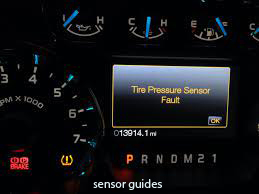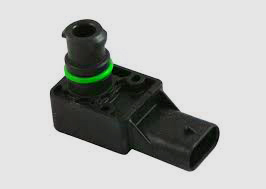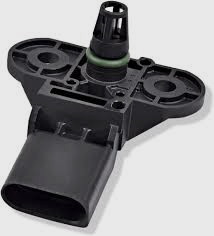Tire sensor fault ford-2024
Maintaining right tire strain is important for secure driving, and your Ford is equipped with a Tire Pressure Monitoring System (TPMS) to help you do simply that. This gadget uses sensors in every tire to reveal strain and warn you if it falls underneath a safe degree. But what takes place when you see a tire sensor fault on your dashboard? Don’t panic! This guide will help you recognize the role of tire stress sensors, common triggers for faults in Ford automobiles, and how to address them.
Tire Pressure Sensors: Your Silent Guardians
Think of tire pressure sensors as your tire’s silent guardians. They’re small, battery-powered devices housed within the valve stem of every tire. These sensors continuously screen strain and transmit data to your vehicle’s laptop device. This statistics is displayed on your dashboard, permitting you to hold an eye fixed for your tire fitness and keep away from capacity problems like underinflation or overinflation.
Common Culprits Behind Tire Sensor Faults in Fords
While tire pressure sensors are dependable, they may be no longer resistant to occasional hiccups. Here are some common reasons you would possibly see a tire sensor fault for your Ford:
• Low Tire Pressure: The maximum common culprit is sincerely low tire strain. If one or extra of your tires is underinflated, the sensor will trigger a fault to provide you with a warning.
• Temperature Fluctuations: Extreme temperature changes can cause transient strain fluctuations, leading to fake alarms. Don’t be amazed if you see a sensor fault after a specifically hot or cold day.
• Sensor Malfunction: Like any electronic tool, sensors can malfunction through the years. This may be due to battery depletion, inner issue failure, or even bodily damage.
• Wheel Installation: Improper wheel set up or harm to the sensor all through tire modifications also can cause faults.

Addressing Tire Sensor Faults: What to Do Next
Seeing a tire sensor fault would not always mean you want to hurry to the mechanic right away. Here are some steps you could take:
1. Check Your Tire Pressure: The first step is usually to test your tire stress manually with a reliable gauge. Inflate any tires which might be underinflated to the encouraged strain, which you may locate on a decal inside the motive force’s door jamb.
2. Reset the TPMS System: Many Ford fashions have a TPMS reset button. Consult your proprietor’s manual for instructions on the way to reset the device. This can occasionally clear false alarms.
3. Monitor the Fault: If the fault persists after checking strain and resetting the device, it is time to go to a qualified mechanic. They can diagnose the problem, replace faulty sensors if essential, and ensure your TPMS is functioning nicely.
Taking Charge of Your Ford: Diagnostic Steps for Tire Sensor Faults
Your Ford is a complicated device, and just like any complex gadget, it can once in a while throw up caution signs. One such indicator is the tire strain monitoring device (TPMS) fault light. Don’t fret, fellow Ford proprietor! This guide will equip you with the understanding and steps to diagnose tire sensor faults the usage of your automobile’s very own onboard diagnostic (OBD) system.
Your Onboard Mechanic: The OBD System
Think of your OBD machine as a hidden mechanic underneath the hood. It constantly video display units essential engine and gadget features, storing diagnostic hassle codes (DTCs) whilst something goes awry. These codes act like cryptic clues, and deciphering them can lead you to the supply of the trouble.
Accessing the Treasure Trove: Finding DTCs
Now, permit’s get all the way down to business. Here’s a way to get entry to the ones DTCs to your Ford:
• Locate the OBD port: This reachable connector is typically tucked beneath the dashboard, close to the steerage wheel. Consult your owner’s guide for its specific area.
• Plug within the scanner: You’ll need an OBD experiment device, effortlessly available at car components shops or on line. Choose one compatible with your Ford model and OBD-II preferred.
• Connect and scan: Turn on the ignition and comply with the scanner’s commands to connect and provoke a test. This will retrieve stored DTCs alongside additional statistics like freeze body records (image of situations while the fault befell).
Cracking the Code: Understanding Tire Sensor DTCs
Not all DTCs are created identical. For tire sensor faults, you’ll be looking for codes starting with the letter “C” followed by using four digits. Common examples consist of:
• C1xxx: These codes commonly imply a selected tire sensor malfunction, with the remaining two digits specifying the affected tire (e.G., C1214 for a fault within the left rear tire sensor).
• C0xxx: These codes point to broader TPMS gadget issues, like low battery voltage or communication issues.
Once you’ve got the DTCs, the net turns into your ally. Search on-line boards and databases in particular for Ford DTCs to apprehend their which means and ability causes. Remember, the code itself simply factors to the place of situation, similarly research might be needed for a precise diagnosis.

Taking Action: What’s Next?
Armed with the DTCs and their interpretations, you have several options:
• Reset the TPMS machine: Some Ford models permit TPMS reset through the tool cluster or dedicated buttons. Consult your manual for specifics. This would possibly clear brief system defects.
• Check tire pressure manually: Don’t rely solely on the TPMS. Grab a trusty tire pressure gauge and ensure all tires are inflated to the recommended ranges, observed on a sticker within the driver’s door jamb.
• Seek expert help: If the fault persists or you’re uncertain approximately the subsequent steps, it’s excellent to go to a qualified mechanic. They have the gear and information to diagnose the difficulty as it should be and connect any faulty sensors or machine issues.
By know-how how to make use of your Ford’s onboard diagnostic device and interpret tire sensor DTCs, you’re empowered to take charge of your car’s fitness. Remember, early detection and right motion can save you larger issues down the road, ensuring smooth and secure trips for you and your Ford.
See It to Believe It: Visual Inspection for Tire Sensor Faults
Before diving into the techy global of codes and scanners, every now and then the handiest answer is proper below your nose – or, greater correctly, right underneath your wheels. A correct old fashioned visual inspection can be an effective tool in diagnosing tire sensor faults on your Ford. So, clutch your flashlight, placed on your detective hat, and allow’s get arms-on!
Scrutinizing the Sentinels: Checking for Sensor Damage
Tire strain sensors are tucked away internal your tires, but that does not suggest they’re proof against the bumps and scrapes of the road. Here’s what to search for:
• Visible cracks or dents: Run your arms along the valve stem in which the sensor is housed. Any important cracks or dents may want to imply physical harm that might be affecting the sensor’s overall performance.
• Corrosion or rust: Look for symptoms of corrosion or rust across the valve stem and sensor base. This construct-up can disrupt the sensor’s verbal exchange with the TPMS machine.
• Loose connections: Check if the sensor is securely fixed to the valve stem. An unfastened connection can save you right facts transmission, leading to fake alarms or faulty readings.
Alignment A-OK: Inspecting Sensor Placement
Just like an out of place puzzle piece, a misaligned sensor can throw the complete TPMS system out of whack. Here’s how to make sure your sensors are inside the proper spot:
• Sensor position: Check if the sensor is located straight and centered on the valve stem. Any substantial tilt or off-center placement might be inflicting conversation problems.
• Tire rotation records: If you’ve got these days turned around your tires, double-take a look at if the sensors were moved together with them. Mismatched sensor positions can confuse the TPMS machine.
By taking a few minutes to visually check out your tire sensors, you could doubtlessly uncover the wrongdoer behind those pesky tire sensor faults. Remember, prevention is fundamental! Regularly checking your sensors for damage and alignment can assist avoid bigger issues down the street.
Stay tuned for our subsequent chapter, where we’ll delve into the arena of TPMS relearning tactics and discover suggestions for maintaining your tire sensors satisfied and wholesome. Until then, hold the ones eyes peeled and your wheels rolling smoothly!
Hitting the Reset Button: Demystifying the Ford TPMS System
The dreaded tire pressure tracking device (TPMS) mild. It stares back at you from your dashboard, a persistent reminder of something amiss. But before you rush to the mechanic, take a deep breath, Ford owner! Sometimes, a simple TPMS reset might be all it takes to silence that nagging mild and get you again on the road with peace of mind.
- Taking Control: A Step-by-Step TPMS Reset Guide
The beauty of cutting-edge era lies in its consumer-friendliness, and your Ford TPMS gadget is not any exception. Resetting it frequently involves only some simple steps:
1. Locate the Reset Button: This unsung hero can be determined in diverse locations depending for your Ford version. Consult your proprietor’s manual for its actual whereabouts. Some fashions have a devoted TPMS reset button, whilst others might require navigating through the device cluster menus.
2. Press and Hold: Once you’ve found the button, press and keep it for the required time, commonly round 5-10 seconds. Your car’s manual will offer the right period. You would possibly listen a beep or see an affirmation message at the dashboard, letting you recognize the reset method has begun.
3. Drive and Monitor: After the reset, do not just park and count on the light to vanish immediately. Your TPMS desires time to recalibrate and synchronize with the sensors in every tire. Take your Ford for a spin, generally round 10-20 minutes of driving at mild speeds, and the light must magically disappear.
Conclusion: Keeping Your Ford Rolling Smoothly with Happy Tires
Maintaining top-rated tire stress is critical for secure driving, and your Ford’s tire stress monitoring device (TPMS) plays a crucial position in ensuring your tires stay glad and healthy. By know-how the not unusual triggers for tire sensor faults, using diagnostic techniques like visual inspections and onboard scans, and understanding while and the way to carry out a TPMS reset, you’re empowered to come to be a proactive Ford owner. Remember, early detection and proper action can prevent bigger issues down the road, main too easy and secure trips for you and the one that you love vehicle.
Here’s a quick recap of the key takeaways:
• Tire stress sensors: These silent guardians screen tire stress and provide you with a warning if it falls underneath secure tiers.
• Common culprits for faults: Low tire stress, temperature fluctuations, sensor malfunction, and improper wheel installation can cause faults.
• Diagnostic steps: Check tire strain, reset the TPMS machine, utilize the onboard diagnostic device to become aware of mistakes codes, and carry out a visual inspection for sensor damage or misalignment.
• TPMS reset: An easy system which can often clear brief system defects or be accomplished after addressing underlying issues like low tire stress.
Remember: A TPMS reset isn’t always a magic restore-all. If the fault persists, consult a certified mechanic for similarly diagnosis and ability upkeep.
FAQs: Your Tire Sensor Woes Answered
Q: How often have to I take a look at my tire strain?
A: It’s encouraged to test your tire stress, along with the spare, as a minimum as soon as a month and before lengthy trips.
Q: What have to I do if the TPMS light comes on but my tires look best?
A: First, check your tire pressure manually. If it is accurate, attempt resetting the TPMS gadget. If the light persists, consult a mechanic for in addition prognosis.
Q: Can I disable the TPMS device?
A: It’s now not encouraged to disable the TPMS system as it’s a protection feature. Disabling it’d depart you unaware of doubtlessly dangerous underinflated tires.






